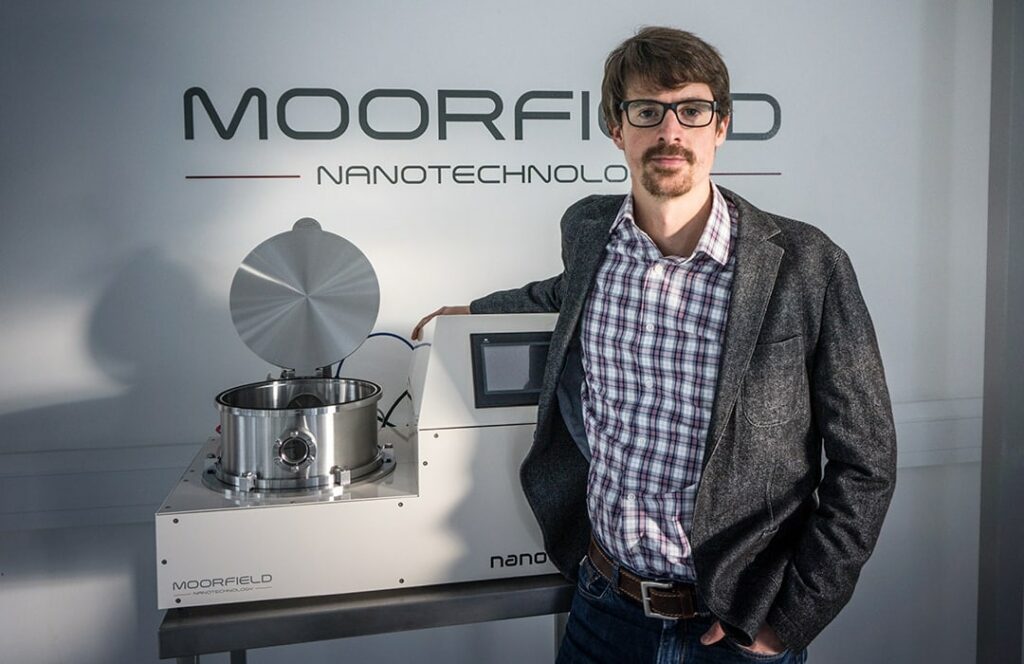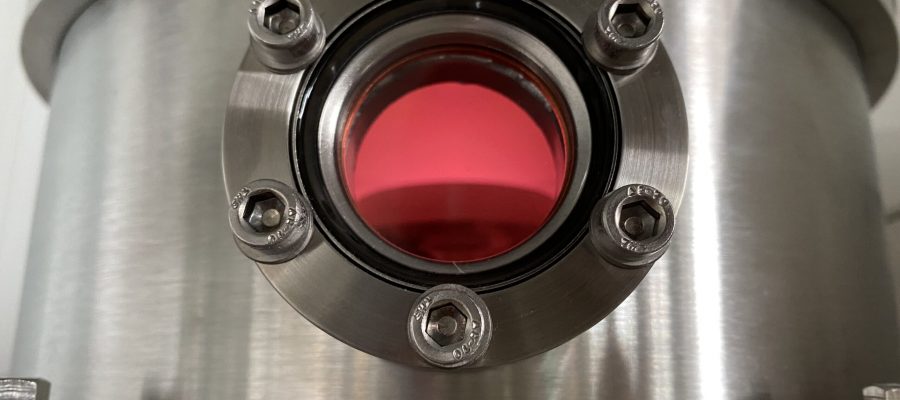
Moorfield are a team of scientists and engineers specialising in the design, manufacture, supply, and support of vacuum deposition (PVD and CVD), etching and annealing systems. We also offer components, consumables, and coating services.
Our systems are applied for research, product development and batch production. Applications include semiconductors, photovoltaics, superconductors, sensors, optics, graphene and 2D materials. Academic and industrial markets are served, worldwide, both direct and through a network of authorised, trained representatives.
All tools are highly modular with a range of options to suit uses and budgets. Customisations are routine.
Core to our approach is partnership with our customers. Starting from first discussions, we carefully and comprehensively understand individual needs. Our extensive in-house expertise allows us to propose effective, unique solutions — quickly.
We are renowned for the quality of our support, always held as a priority. We want our customers to succeed and recognise that ongoing contact and advice is a critical part of that.
Manufacturing is performed at our UK headquarters in Cheshire, a short distance from Manchester and major transport links including Manchester Airport and the M6.
Moorfield was incorporated in 1995 and acquired by Judges Scientific Plc in 2019.
Our products
Moorfield supply systems for scientific research, product development and pilot/small-batch scale industrial production. Our systems are of four main types: physical vapour deposition (PVD), chemical vapour deposition (CVD), reactive ion etching (RIE) and annealing.
For PVD, we equip tools with a range of techniques including magnetron sputtering, thermal and e-beam evaporation, and ion beam sources for pre-deposition etch cleaning and IBAD (ion-beam assisted deposition). These allow users to carry out precisely-controlled depositions of a full range of materials including metals, dielectrics, ceramics and organics. In addition to deposition and ion beam sources, process chambers can be fitted with hardware for in-situ rate and thickness monitoring and feedback control, load-locks, and a range of advanced stage components including heating, cooling, bias, rotation, tilt, GLAD (glancing angle deposition), gradient masking and in-vacuum mask/substrate exchange.
PVD systems are available as our floor-standing, fully-customisable MiniLab range, or our compact nanoPVD series suitable for benchtop location.
Our CVD systems came about through grant-funded projects to develop compact tools for the synthesis of graphene and carbon nanotubes. With the projects complete we released our nanoCVD range in 2013. Both low-pressure and atmospheric pressure tools can be supplied. Since then, we have expanded the range’s capabilities to include wafer-scale production systems. Most recently, systems have been upgraded with plasma-enhanced (PECVD) capability aimed at material production at reduced temperatures.
The RIE tools stemmed from work carried out with the graphene group at the University of Manchester. They approached us with a requirement for an etching technology that would be suitable for working with their sensitive films (graphene and 2D materials). Out of this came our Soft Etching technology, first offered within our nanoETCH platform. While it is still ideal for gentle, precisely-controlled etching, the technology has now been expanded to cover more aggressive etchant gases enhancing the window of possible applications.
Annealing products came from our expertise in building high-temperature heating stages, originally supplied as part of our PVD and CVD products. Today, we offer these in dedicated tools based on our benchtop ANNEAL and standalone MiniLab products. Temperatures up to 1,000 °C can be produced, together with optional introduction of various process gases including with pressure control. In this way, the tools can provide full, fine control over annealing conditions as required for many research needs.
For cases in which pre-and post-process handling must be carried out in an inert environment (i.e., where substrates are sensitive to oxygen or moisture), we are also adept at integrating tools within glovebox environments. For this, we can work with most glovebox models or can offer a fully integrated solution directly.
While most systems are of one type, Moorfield can also combine multiple techniques within a single tool. Routine examples are deposition systems with both magnetron sputtering and evaporation sources, and glovebox-integrated units with RIE and annealing stages.
For more information on any of our products, check out the rest of our website or get in touch.


